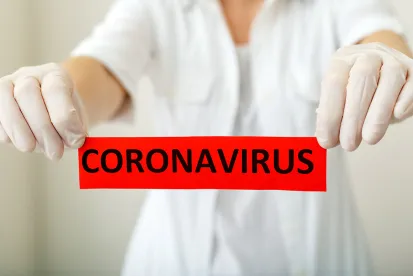The Families First Coronavirus Response Act (“Act”) provides two new refundable payroll tax credits (“tax credits”) for employers providing paid emergency sick leave or paid FMLA, including tax relief for self-employed individuals. As written, however, the Act is not practical as to these tax credits, since an employer would not be reimbursed until some later date after the coronavirus period had passed (weeks to months to possibly years later).
The good news is the IRS corrected that problem in its guidance issued on Friday, March 20. Under that guidance, the IRS announced how small and midsize employers can begin taking advantage of the tax credit.
Specifically, employers are now able to immediately recover payments for paid emergency sick leave or paid FMLA by keeping a portion of the taxes it otherwise would deposit as part of their employees’ federal income taxes, the employees’ share of social security and Medicare taxes, and the employers’ share of social security and Medicare Taxes.
The balance of this article will first describe the tax credits that employers may claim for paid leave which it is required to pay by virtue of the Act, and second, describe the procedures outlined in the IRS’ guidance with respect to the prompt payment for the cost of providing such leave attributed to the tax credits.
Emergency Family and Medical Leave Act (“EFMLA”)
Eligible employers are allowed a refundable tax credit equal to 100 percent of qualified family leave wages required to be paid under EFMLA that are paid by an employer for each calendar quarter. The amount of qualified family leave wages taken into account for each employee is capped at $200 per day and $10,000 for all calendar quarters.
Eligible self-employed individuals are allowed a tax credit equal to 100 percent of a qualified family leave equivalent amount for eligible self-employed individuals. This credit is allowed against income taxes and is refundable. The qualified family leave equivalent amount is capped at the lesser $200 per day or the average daily self-employment income for the taxable year per day.
Emergency Paid Sick Leave Act (“EPSLA”)
Eligible employers are allowed a refundable tax credit equal to 100 percent of qualified paid sick leave wages required to be paid under EPSLA that are paid by an employer for each calendar quarter.
Eligible self-employed individuals are allowed a refundable tax credit equal to 100 percent of a qualified sick leave equivalent amount for eligible self-employed individuals who must self-isolate, obtain a diagnosis, or comply with a self-isolation recommendation with respect to coronavirus.
For eligible self-employed individuals caring for a family member or for a child whose school or place of care has been closed due to coronavirus, the section provides a refundable tax credit equal to 67 percent of a qualified sick leave equivalent amount.
Prompt Payment for the Cost of Providing Paid Leave
The IRS guidance provides that any taxes an employer is required to deposit, including federal income taxes, the employees’ share of social security and Medicare taxes, and the employers’ share of social security and Medicare taxes, may now be used to to pay employees taking paid leave under EFMLA and EPSLA. Notably, this allows employers to use funds from the taxes they withhold from or pay on behalf of all employees and not just those to whom they must provide paid leave under EFMLA and EPSLA. The IRS gave two examples of how this works:
-
Example 1, if an eligible employer paid $5,000 in sick leave and is otherwise required to deposit $8,000 in payroll taxes, including taxes withheld from all its employees, the employer could use up to $5,000 of the $8,000 of taxes it was going to deposit for making qualified leave payments. The employer would only be required under the law to deposit the remaining $3,000 on its next regular deposit date.
-
Example 2, if an eligible employer paid $10,000 in sick leave and was required to deposit $8,000 in taxes, the employer could use the entire $8,000 of taxes in order to make qualified leave payments and file a request for an accelerated credit for the remaining $2,000.
In the case where there are not sufficient taxes to cover the cost of qualified sick and child care leave paid, as described in example 2 above, employers will be able file a request for an accelerated payment from the IRS which the IRS stated it expects to process these requests in two weeks or less. The details of this new, expedited procedure has not yet been announced by the IRS.
Finally, I believe further guidance from the IRS is needed to clear up inconsistencies with respect to whether a federal, state and local governments (and agents thereof), may claim tax credits for paid leave under EFMLA and EPSLA. On the one hand, the specific provision in the EFMLA and the EPSLA make clear that they may not claim refundable tax credits for paid leave required to be paid under those acts.
However, a later provision in the Act muddies the waters (so to speak) by stating that wages required to be paid under EFMLA and EPSLA shall not be considered wages for purposes of IRC Code ss. 3111(a) and 3221(a). And it does so without reference to the type of employer to whom that provision is applicable.
Hence, a question exists as to whether a public agency is required to withhold social security and Medicare taxes for paid leave required to be paid under EFMLA and EPSLA for an employee covered by a Section 218 Agreement (no exclusion applies) since the Act does not treat those as wage for purposes of IRC Code ss. 3111(a) and 3221(a).





 />i
/>i

